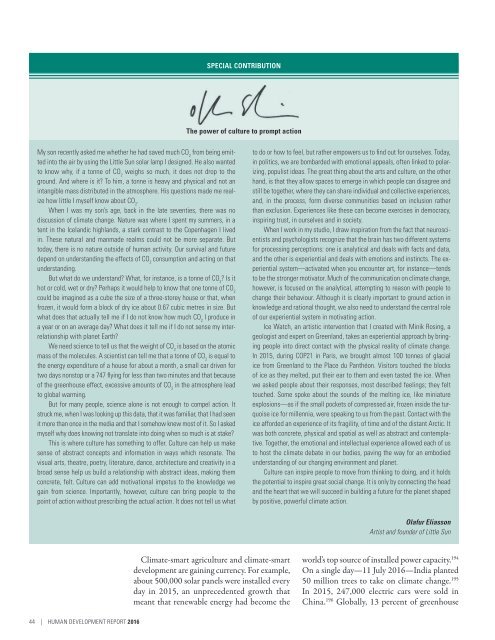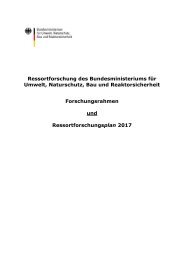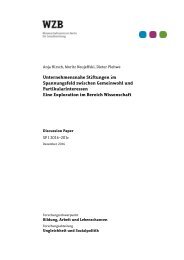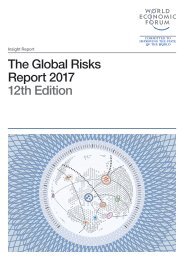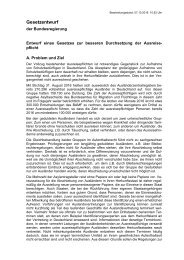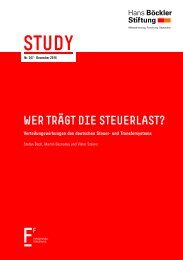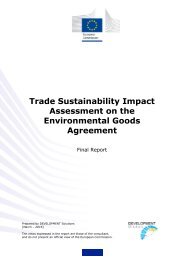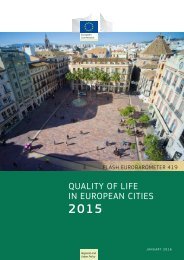Human Development Report 2016
6Tyccfrzw
6Tyccfrzw
Create successful ePaper yourself
Turn your PDF publications into a flip-book with our unique Google optimized e-Paper software.
SPECIAL CONTRIBUTION<br />
The power of culture to prompt action<br />
My son recently asked me whether he had saved much CO 2<br />
from being emitted<br />
into the air by using the Little Sun solar lamp I designed. He also wanted<br />
to know why, if a tonne of CO 2<br />
weighs so much, it does not drop to the<br />
ground. And where is it? To him, a tonne is heavy and physical and not an<br />
intangible mass distributed in the atmosphere. His questions made me realize<br />
how little I myself know about CO 2<br />
.<br />
When I was my son’s age, back in the late seventies, there was no<br />
discussion of climate change. Nature was where I spent my summers, in a<br />
tent in the Icelandic highlands, a stark contrast to the Copenhagen I lived<br />
in. These natural and manmade realms could not be more separate. But<br />
today, there is no nature outside of human activity. Our survival and future<br />
depend on understanding the effects of CO 2<br />
consumption and acting on that<br />
understanding.<br />
But what do we understand? What, for instance, is a tonne of CO 2<br />
? Is it<br />
hot or cold, wet or dry? Perhaps it would help to know that one tonne of CO 2<br />
could be imagined as a cube the size of a three-storey house or that, when<br />
frozen, it would form a block of dry ice about 0.67 cubic metres in size. But<br />
what does that actually tell me if I do not know how much CO 2<br />
I produce in<br />
a year or on an average day? What does it tell me if I do not sense my interrelationship<br />
with planet Earth?<br />
We need science to tell us that the weight of CO 2<br />
is based on the atomic<br />
mass of the molecules. A scientist can tell me that a tonne of CO 2<br />
is equal to<br />
the energy expenditure of a house for about a month, a small car driven for<br />
two days nonstop or a 747 flying for less than two minutes and that because<br />
of the greenhouse effect, excessive amounts of CO 2<br />
in the atmosphere lead<br />
to global warming.<br />
But for many people, science alone is not enough to compel action. It<br />
struck me, when I was looking up this data, that it was familiar, that I had seen<br />
it more than once in the media and that I somehow knew most of it. So I asked<br />
myself why does knowing not translate into doing when so much is at stake?<br />
This is where culture has something to offer. Culture can help us make<br />
sense of abstract concepts and information in ways which resonate. The<br />
visual arts, theatre, poetry, literature, dance, architecture and creativity in a<br />
broad sense help us build a relationship with abstract ideas, making them<br />
concrete, felt. Culture can add motivational impetus to the knowledge we<br />
gain from science. Importantly, however, culture can bring people to the<br />
point of action without prescribing the actual action. It does not tell us what<br />
to do or how to feel, but rather empowers us to find out for ourselves. Today,<br />
in politics, we are bombarded with emotional appeals, often linked to polarizing,<br />
populist ideas. The great thing about the arts and culture, on the other<br />
hand, is that they allow spaces to emerge in which people can disagree and<br />
still be together, where they can share individual and collective experiences,<br />
and, in the process, form diverse communities based on inclusion rather<br />
than exclusion. Experiences like these can become exercises in democracy,<br />
inspiring trust, in ourselves and in society.<br />
When I work in my studio, I draw inspiration from the fact that neuroscientists<br />
and psychologists recognize that the brain has two different systems<br />
for processing perceptions: one is analytical and deals with facts and data,<br />
and the other is experiential and deals with emotions and instincts. The experiential<br />
system — activated when you encounter art, for instance — tends<br />
to be the stronger motivator. Much of the communication on climate change,<br />
however, is focused on the analytical, attempting to reason with people to<br />
change their behaviour. Although it is clearly important to ground action in<br />
knowledge and rational thought, we also need to understand the central role<br />
of our experiential system in motivating action.<br />
Ice Watch, an artistic intervention that I created with Minik Rosing, a<br />
geologist and expert on Greenland, takes an experiential approach by bringing<br />
people into direct contact with the physical reality of climate change.<br />
In 2015, during COP21 in Paris, we brought almost 100 tonnes of glacial<br />
ice from Greenland to the Place du Panthéon. Visitors touched the blocks<br />
of ice as they melted, put their ear to them and even tasted the ice. When<br />
we asked people about their responses, most described feelings; they felt<br />
touched. Some spoke about the sounds of the melting ice, like miniature<br />
explosions — as if the small pockets of compressed air, frozen inside the turquoise<br />
ice for millennia, were speaking to us from the past. Contact with the<br />
ice afforded an experience of its fragility, of time and of the distant Arctic. It<br />
was both concrete, physical and spatial as well as abstract and contemplative.<br />
Together, the emotional and intellectual experience allowed each of us<br />
to host the climate debate in our bodies, paving the way for an embodied<br />
understanding of our changing environment and planet.<br />
Culture can inspire people to move from thinking to doing, and it holds<br />
the potential to inspire great social change. It is only by connecting the head<br />
and the heart that we will succeed in building a future for the planet shaped<br />
by positive, powerful climate action.<br />
Olafur Eliasson<br />
Artist and founder of Little Sun<br />
Climate-smart agriculture and climate-smart<br />
development are gaining currency. For example,<br />
about 500,000 solar panels were installed every<br />
day in 2015, an unprecedented growth that<br />
meant that renewable energy had become the<br />
world’s top source of installed power capacity. 194<br />
On a single day — 11 July <strong>2016</strong> — India planted<br />
50 million trees to take on climate change. 195<br />
In 2015, 247,000 electric cars were sold in<br />
China. 196 Globally, 13 percent of greenhouse<br />
44 | HUMAN DEVELOPMENT REPORT <strong>2016</strong>


